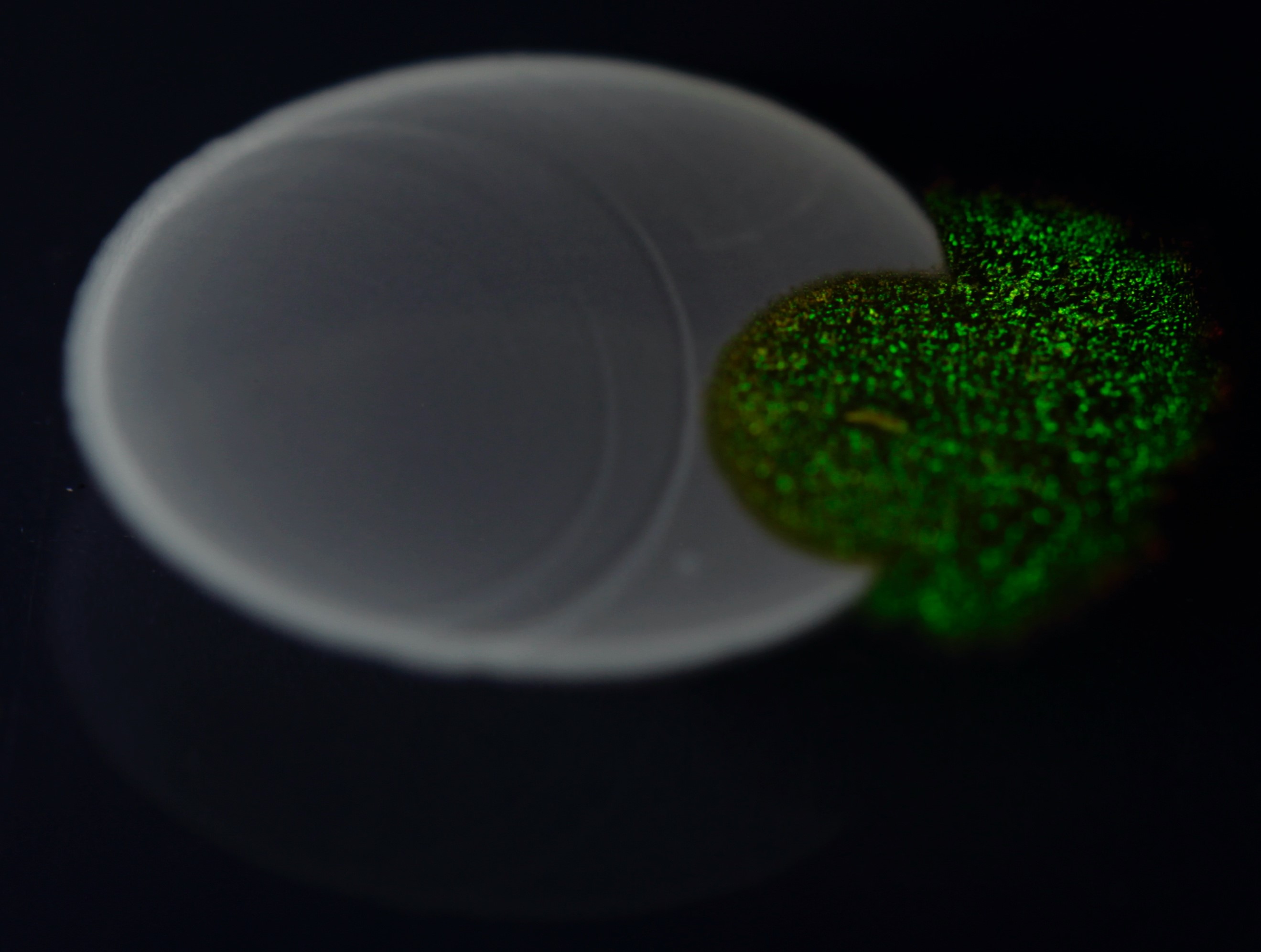Nature produces vibrant colours. In many cases the most intense colours are produced by light interacting with tiny, repeated structures. This, structural colour, is quite distinct from dyes and pigments, and might be most familiar in the feathers of the peacock. Usually, but not always, the evolutionary function is to do with being seen – communicating with other organisms, alternatively in manipulating light in other ways for camouflage or to help photosynthesis. This makes it puzzling as to why a common group of bacteria, the Flavobacteria, are capable of organizing their colonies to display bright, structural colour.
Hoekmine BV works within the Utrecht Science Park InnovationLab Life Science & Chemistry and Hogeschool Utrecht on developing structural colour commercially. As described in the paper by Hamidjaja and coworkers, just published in the ISME Journal (https://rdcu.be/b6CMw), there may be an unexpected explanation for the colour of the bacteria. The group, from the NL and the UK, have looked at the violent world of bacteria-on-bacteria predation – like any other ecosystems the microbial world has a complex network of predator/prey interactions. The paper suggests that Flavobacterium IR1 is predatory on other bacteria. The organization that underlies the colour of IR1 assists in predation and the beautiful colours may be a side effect of highly organised cells attacking their neighbours. Despite this, bacterial structural colour may be useful within the world of biotechnology in creating sustainable colours that replace polluting synthetic dyes.

The glittering, green colony of Flavobacterium consuming a colony of another, white bacterium. IMAGE: C. Ingham (Hoekmine BV, NL).
Authors: Raditijo Hamidjajaa, Jérémie Capouladeb, Laura Catónac, Colin J. Inghama
aHoekmine BV, Utrecht, NL www.hoekmine.com
bKavli Institute of Nanoscience, Delft University of Technology, NL
cDepartment of Chemistry, Cambridge University, UK
Correspondence to Colin J. Ingham, colinutrecht@gmail.com; Phone 0031642477078.

